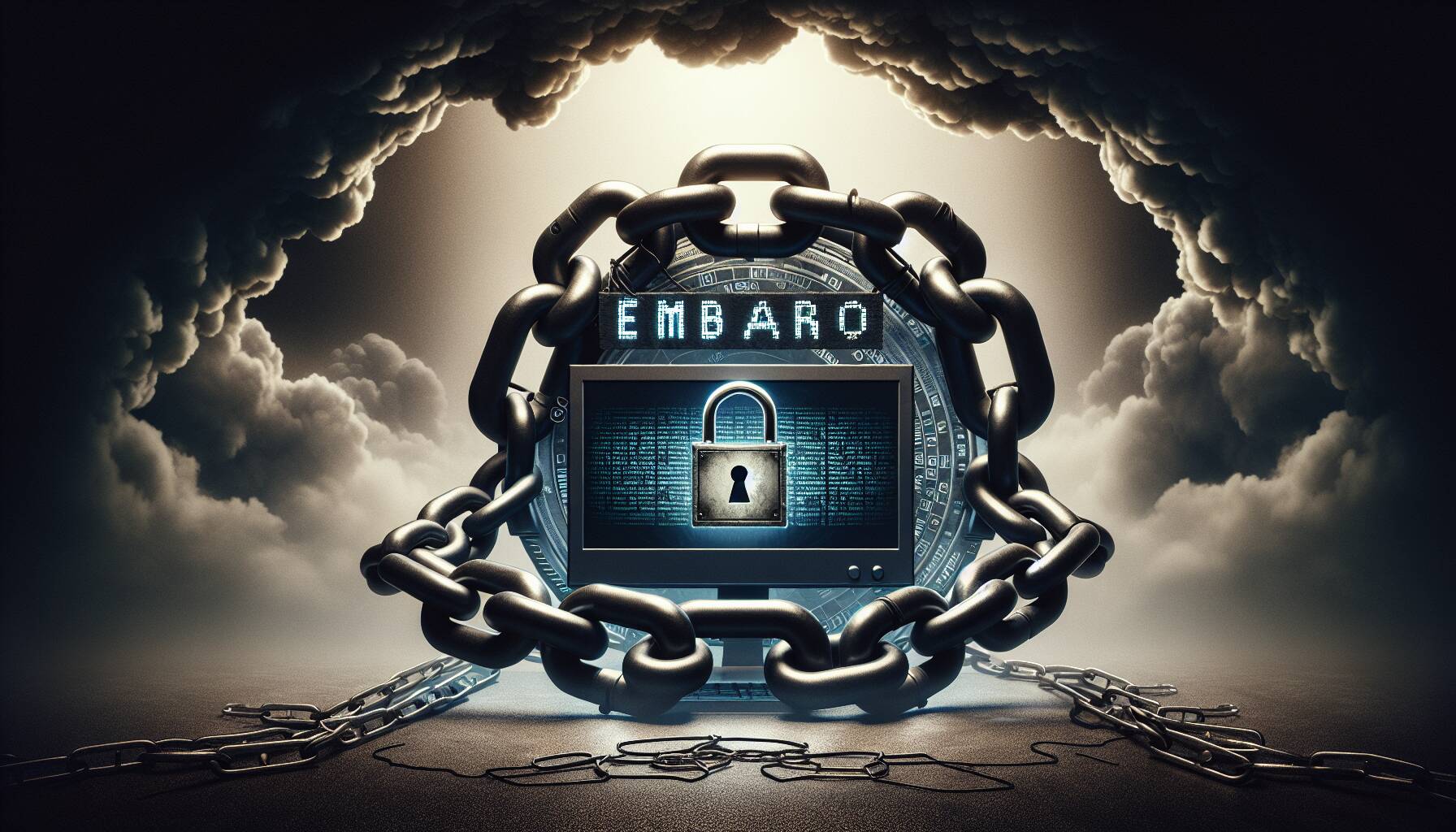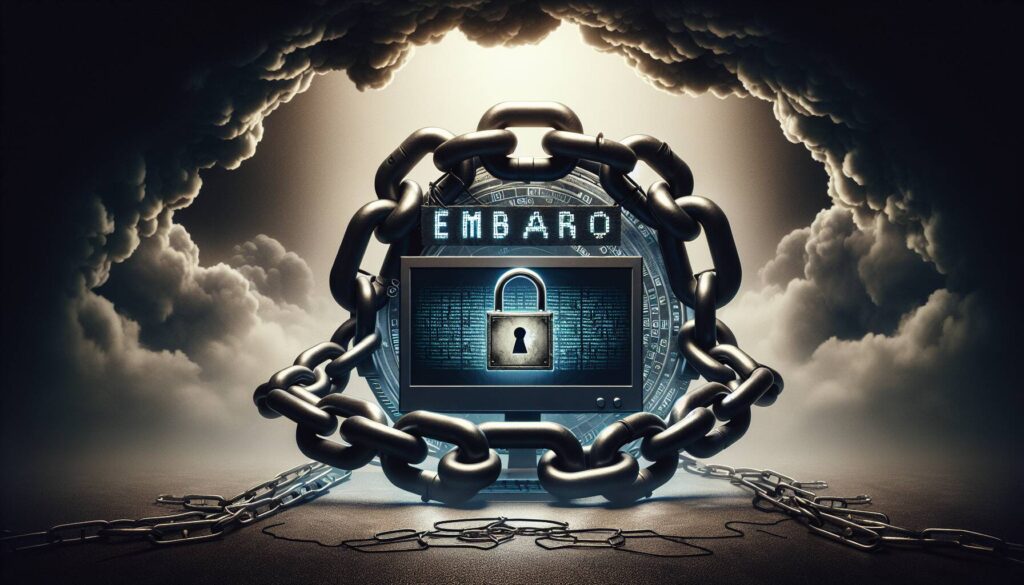The world of cryptocurrency has once again been shaken by the emergence of the ransomware group known as Embargo, which has reportedly amassed at least $34.2 million in various digital tokens since its debut in April 2024. According to blockchain analytics firm TRM Labs, evidence suggests that this group may be a rebranding of the previously inactive BlackCat (ALPHV) organization, due to notable overlaps in coding and infrastructure.
Operating under a ransomware-as-a-service (RaaS) model, Embargo enables affiliates to use its tools while the group retains control over critical infrastructure and ransom negotiations. Key sectors affected include U.S. healthcare, manufacturing, and business services, where downtime can lead to significant financial and operational impacts. Reports indicate ransom demands have soared to $1.3 million, with notable targets including American Associated Pharmacies and various regional hospitals.
“TRM traced on-chain links connecting historical BlackCat wallets with addresses associated with Embargo victims, alongside similarities in off-chain tactics,” said a spokesperson for TRM Labs.
The group’s strategic operations involve moving funds through intermediary wallets to high-risk exchanges, sidestepping traditional mixers, an approach that has seen approximately $13 million successfully funneled into global virtual asset service providers (VASPs), while a staggering $18.8 million remains in unidentified wallets. This tactic appears to be designed to delay detection and awaits more favorable conditions for funds movement.
Additionally, Embargo employs a double extortion method that includes both data encryption and threats of public exposure, enhancing its leverage over victims. TRM Labs posits that Embargo may be leveraging artificial intelligence to extend the reach of phishing campaigns and improve its operational tactics—an evolution increasingly seen among ransomware groups today.
This apparent shift in focus toward U.S. healthcare signals a significant change in ransomware strategies, targeting sectors where service disruption could jeopardize public safety, thereby increasing the urgency for victims to capitulate to demands.
If Embargo is indeed a rebranded version of BlackCat, it underscores a recurring trend in the ransomware landscape: the reinvention and adaptation of criminal networks to evade law enforcement while continuing to utilize cryptocurrencies as a primary mechanism for facilitating ransom payments and laundering ill-gotten gains.

Ransomware Group Embargo and Its Impact
Key points regarding the emergence and activities of the ransomware group Embargo:
- Financial Gains: Embargo has amassed at least $34.2 million since April 2024.
- Possible Rebranding: The group’s overlap with the defunct BlackCat (ALPHV) suggests it may be a rebrand, indicating persistent threats in the ransomware landscape.
- Ransomware-as-a-Service Model: Embargo operates by providing affiliates with tools while managing the infrastructure, increasing the scale of attacks.
- Primary Targets: U.S. healthcare, manufacturing, and business services, where operational downtime can significantly impact public safety and business continuity.
- High Ransom Demands: Ransom demands have reached up to $1.3 million, affecting entities like American Associated Pharmacies and regional hospitals.
- On-Chain Link Tracing: TRM Labs identified connections between BlackCat wallets and Embargo victims, highlighting a continuity of threat tactics.
- Double Extortion Tactics: Embargo combines file encryption with data theft threats, increasing pressure on victims to comply with ransom demands.
- Use of AI in Attacks: The group may be experimenting with AI to enhance phishing, mutate payloads, and increase reconnaissance efficiency.
- Impact on Public Safety: The focus on healthcare sectors reflects a strategy shift toward services where disruption can severely impact community safety and health.
- Ransom Settlement Practices: Cryptocurrency is the primary medium for ransom payments, complicating detection and law enforcement actions against the group.
Ransomware Threat Evolution: Embargo’s Ascendancy in the Cybercrime Landscape
The emergence of the ransomware group Embargo, which has reportedly amassed over $34.2 million since April 2024, signals a concerning evolution in cybercriminal tactics. By leveraging a ransomware-as-a-service (RaaS) model, Embargo maintains robust control over its operations while empowering affiliates with sophisticated tools. This operational strategy mirrors the successes seen with groups like BlackCat (ALPHV), from which Embargo appears to have rebranded, suggesting a continuity of destructive capabilities under a new guise.
In terms of competitive advantages, Embargo has strategically targeted sectors like U.S. healthcare, manufacturing, and business services—industries where operational downtime is not just costly, but can also jeopardize public safety. This targeting not only amplifies the potential for higher ransom demands, averaging around $1.3 million, but it also increases the pressure on victims to comply swiftly to mitigate risks to their operations and public perception. Reports indicate high-profile victims such as American Associated Pharmacies and various regional hospitals have already been ensnared, illuminating the vulnerabilities inherent in these critical sectors.
However, with increased scrutiny on ransom payments—reportedly falling by 35% in 2024—Embargo may face challenges as victims become more resistant to paying. While the group employs double extortion techniques, combining file encryption with threats of data leaks to instantly heighten the stakes, the growing awareness and resolve among organizations to refuse payment could complicate Embargo’s operational landscape.
Embargo’s technical agility is underscored by its potential utilization of AI for phishing and payload mutation, showcasing an adaptability that could further enhance its attack frameworks. However, this sophistication may also induce rival ransomware groups to innovate or intensify competition, particularly as affiliates fluidly transition between campaigns—a dynamic that could lead to market saturation or tactical redundancy.
The implications of Embargo’s activities extend beyond its immediate victims. Law enforcement agencies are poised to intensify their focus as more attacks orchestrated by this group come to light, potentially creating backlash for crypto exchanges involved in movement of illicit funds. As Embargo continues to develop its operational model, the interplay between ransomware groups and law enforcement measures will be critical in determining both the longevity of such operations and the evolving tactics of cybercriminals.
Overall, while Embargo represents a formidable force within the ransomware landscape, the group must navigate an increasingly complex environment filled with both opportunity and peril, not only impacting its victims but also reshaping the broader cybersecurity and law enforcement landscape.

















